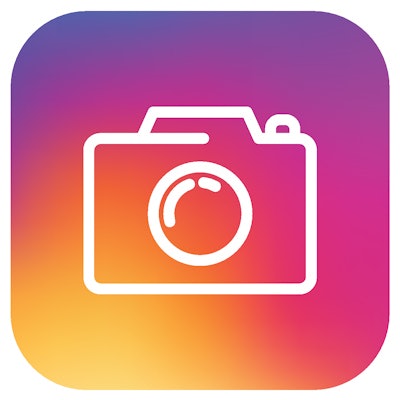
When it comes to using social media for radiology education and communication, Instagram can be a powerful tool and shouldn't be ignored by radiologists, according to an article published in the June issue of Academic Radiology.
Instagram isn't used as much as Facebook or Twitter for medical education. As a result, educators -- particularly in radiology -- may not recognize its value, wrote a team led by Serena Shafer of Johns Hopkins Hospital in Baltimore. But the fact that images are its main content makes it a good fit.
"Instagram is ideally suited for radiology education because the biggest difference between [it] and other widely used social media tools is its primary content: images," the group wrote. "Instagram also has the potential to reach across professional roles (student, resident, technologist, and physicians) and to inspire more medical students to pursue radiology as a career by reaching them early in their premedical and medical school education."
Social media disconnect?
There's some disconnect between which social media tools educators use to communicate with their students and which tools medical students use, Shafer and colleagues noted. A 2015 survey found that the top four tools used by educators were Facebook (52%), Twitter (47%), LinkedIn (21%), and Google Plus (16%), while students used Facebook (100%), YouTube (43%), Twitter (31%), and Instagram (30%).
Instagram has potential, but learning how to apply it can be challenging for new users. The researchers offered a primer on Instagram in an attempt to facilitate its use in radiology education (Acad Radiol, June 2018, Vol. 25:6, pp. 819-822).
One of Instagram's major differences compared with Facebook or Twitter is that it is smartphone- and tablet-driven, rather than desktop- or laptop-based. Instagram images can certainly be viewed on a desktop computer, but users create content via handheld devices.
Shafer and colleagues outlined the best ways to use Instagram for radiology education purposes:
- Get familiar with the command buttons. The "home" button allows users to scroll through images posted by people being followed by the account, "browse" curates images based on the likes of people being followed, the plus sign button allows users of the account to add images, and "account profile" allows users to edit the account and view previous posts.
- Customize the user profile. "Customizing the user profile gives credibility to the account and is an opportunity to educate users on what to expect from the account," Shafer's group noted. For radiology education purposes, the account should be set to public mode.
- Be proactive with content and timing. All images should be related to radiology education, and you should post varied images such as multimodality findings for a single disease. Followers seem to respond to a steady posting pattern rather than intermittent posts: "Adhere to a daily posting quota (e.g., five posts a day)," Shafer and colleagues wrote.
- Use hashtags well. Hashtags create a link from posted images to others in the same category; each picture should include at least one hashtag, and educators should make sure one of them references a teaching file (i.e., #CTteachingfile). "By consistently using the same hashtags, all radiologists posting images to Instagram will be contributing to a giant image repository that can be easily searched," the group noted.
- Make sure images are anonymous. "When publishing patient cases, images need to be anonymized before posting to Instagram to ensure that no protected health information gets published," Shafer and colleagues warned. "Instagram does not have in-app tools to anonymize the image."
Far-reaching tool
As part of their primer, the researchers presented Instagram results from CTisus.com, a radiology teaching website established in 2016 that actively uses the platform. The site's Instagram account has added 6,000 followers in two years, which the authors attributed to consistency in posting type, hashtags, and schedule. Most of CTisus' followers are between 25 and 34 years old (51%), and they are from locations around the world, including the U.S. (14%), Brazil (10%), Russia (9%), Iran (5%), and India (5%).
CTisus' experience with Instagram demonstrates that it is a helpful radiology education resource for students, residents, technologists, and radiologists, and it offers an easy way to share images and videos, according to Shafer's group.
"The popularity of Instagram ... presents radiology with a unique opportunity to educate the inquisitive younger generation that populates the application and to potentially inspire more medical professionals to pursue the field," the researchers concluded.



















